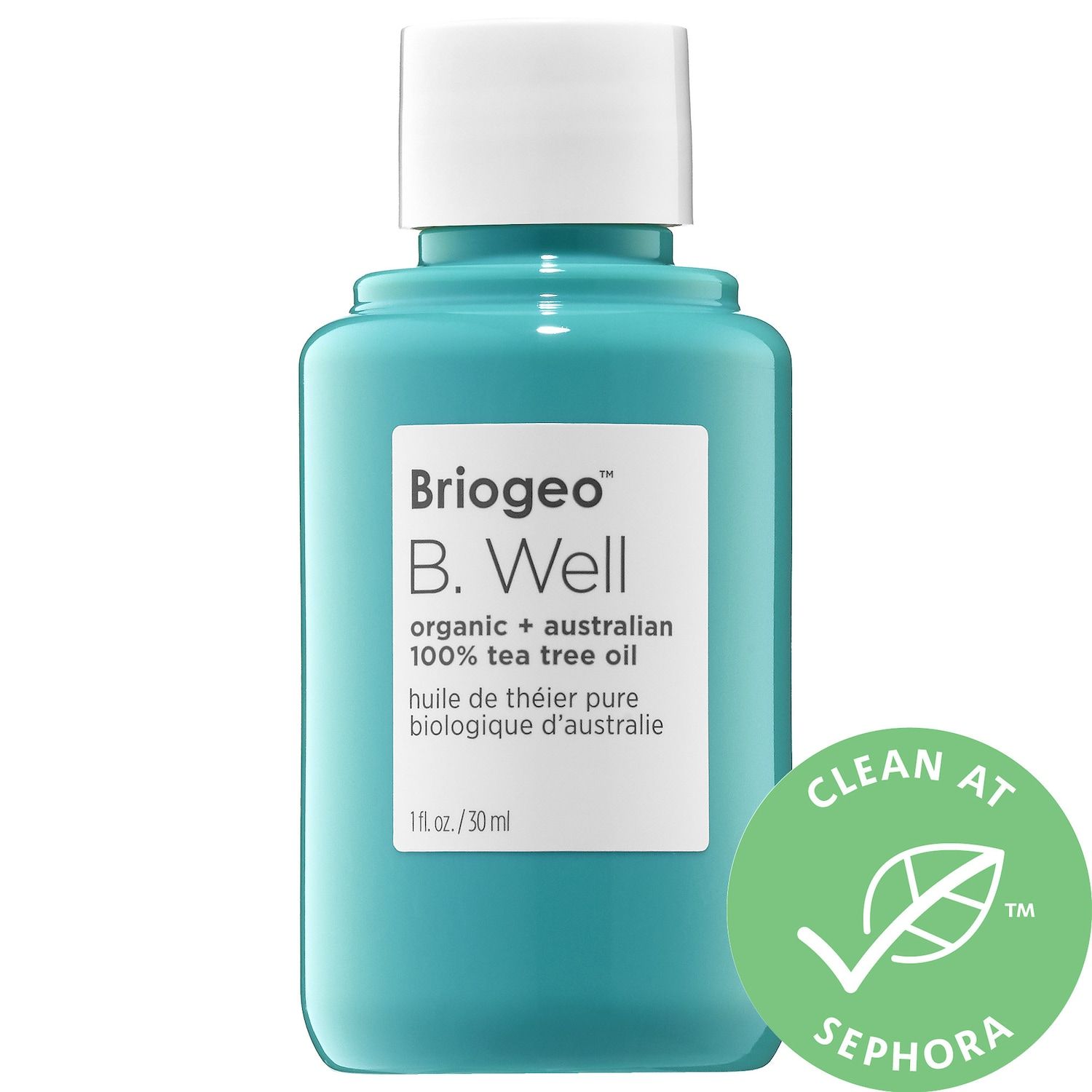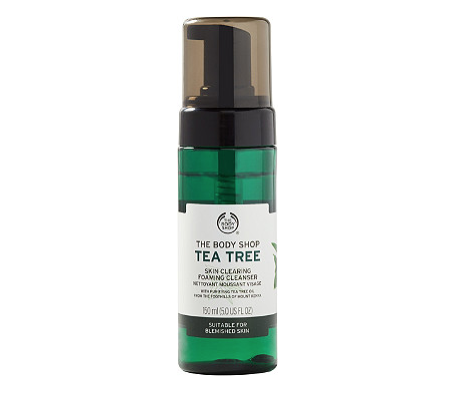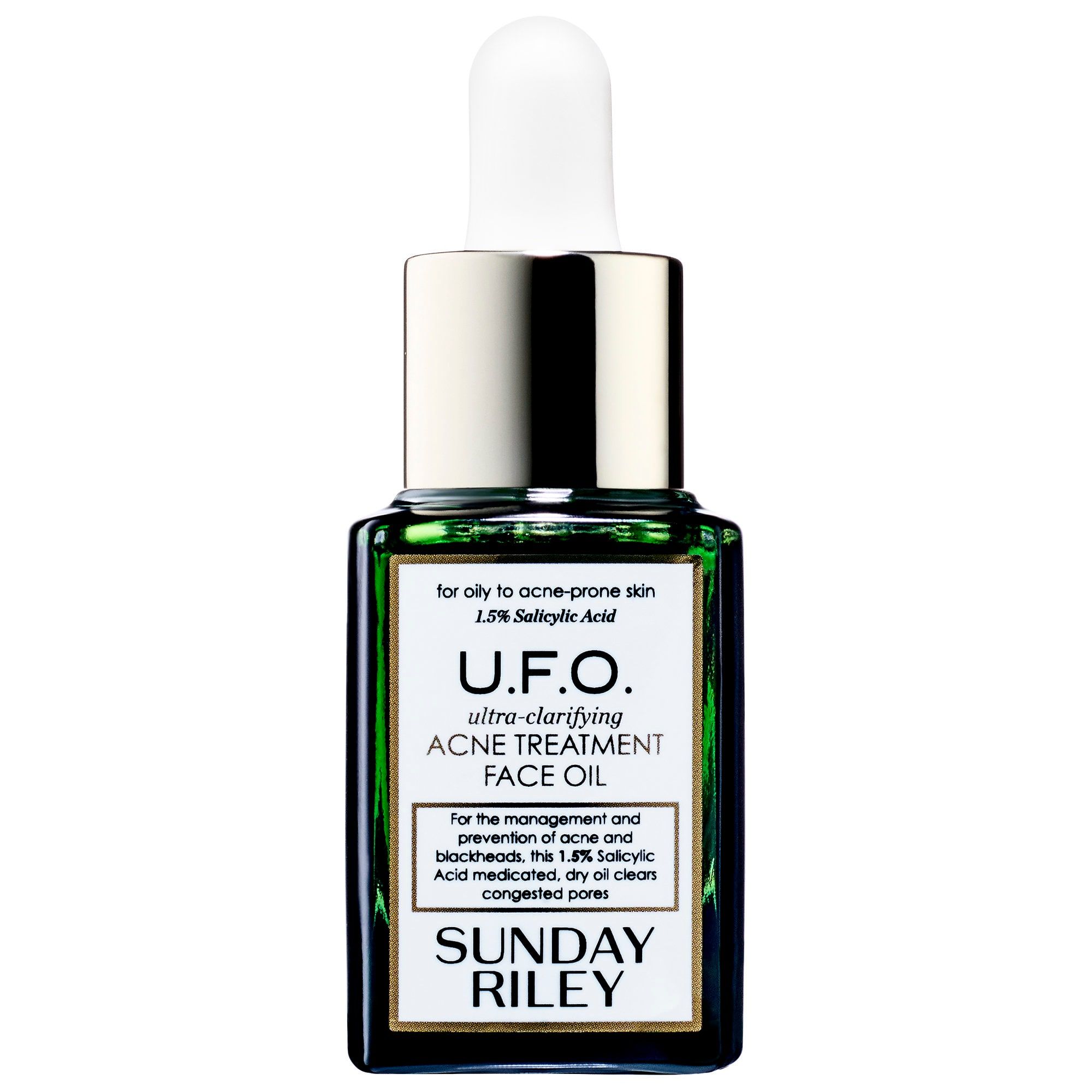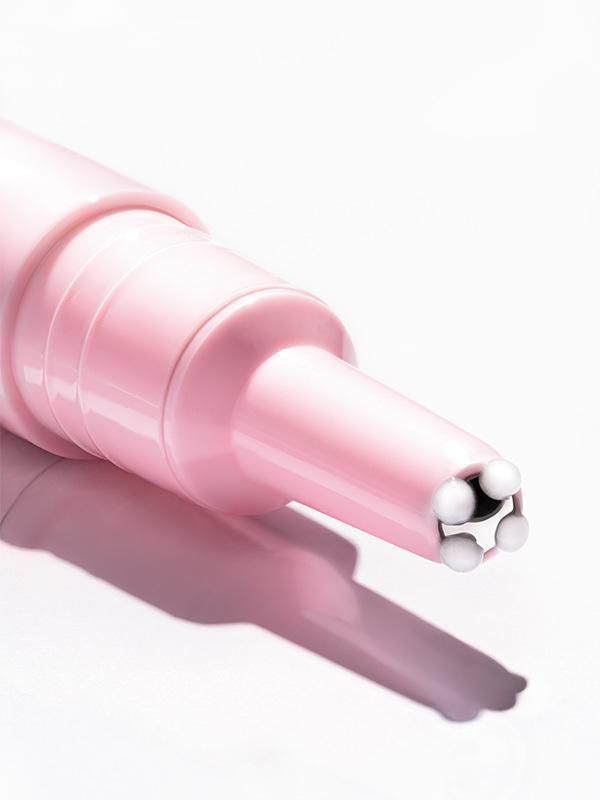How to Use Tea Tree Oil for Acne, According to Dermatologists

While benzoyl peroxide and salicylic acid are tried and true acne fighters, tea tree oil is a natural alternative that gives them a run for their money. The essential oil is known for its anti-inflammatory properties—two major concerns for those with acne-prone skin.
However, like all skincare products, you need to make sure it’s the right fit for your complexion. Before adding it into your regimen, there are a few things to understand about this blemish buster. Below, dermatologists weigh in on your biggest questions about tea tree oil, so you can send those pimples packing for good.
Tea tree oil is effective because it is naturally antibacterial.
Derived from Melaleuca alternifolia, a small tree native to Australia, tea tree oil contains terpinene-4-ol. “This property has antibacterial and anti-yeast properties,” explains Marisa Garshick, MD, a New York-based dermatologist. “It helps with acne because the oil has been found to have antimicrobial effects against Cutibacterium acnes, a type of bacteria that is found in healthy normal skin, but one that’s also known to be involved in the formation of acne.” This is why tea tree oil has been shown to reduce acne, especially inflamed red bumps, and according to Dr. Garshick, there have also been studies which suggest that tea tree oil is beneficial in clearing up non-inflammatory blackheads and whiteheads, too. “Research also shows tea tree oil triggers the activity of white blood cells, which are key in the healing process,” adds Deanne Robinson, MD, a Connecticut-based dermatologist.
Unfortunately, tea tree oil isn’t great for sensitive skin.
“While it is well tolerated by most skin types; if you have sensitive or eczema-prone skin, you should avoid tea tree oil as it can cause irritation or true allergic eczema,” says Dr. Robinson. The last thing you want is a breakout and a nasty rash. That being said, it can be a gentler option than benzoyl peroxide or salicylic acid, so if your skin is on the finicky side it may be a good solution as long as your derm gives you the green light.
Never apply tea tree oil directly to your skin because it can cause serious irritation.
Usually when you’re working with essential oils, you mix them in a carrier oil (such as olive, coconut, or almond oil), but according to Dr. Robinson, these oils can exacerbate your acne, which is why she suggests mixing tea tree with your moisturizer instead. “For treating the entire face proactively, I recommend adding a few drops into a hyaluronic acid facial moisturizer and then applying,” says Dr. Robinson. “For a spot treatment, dampen a cotton ball with water, add a drop of tea tree oil and blot gently.”
“It’s important to remember that just because it’s natural, it doesn’t mean it won’t be irritating to skin,” advises Dr. Garshick. In its pure state, tea tree oil is a very powerful ingredient, so use caution when applying it to skin. The safest way to avoid a skin SOS moment? Patch test first. “It’s always a good idea to test a new ingredient or product on your arm to see how you react before going for the face,” confirms Dr. Robinson.
One easy way to incorporate tea tree oil is using products containing it.
If you’re interested in trying out tea tree oil, a good way to incorporate it into your routine is by choosing a product that already has it in its formulation. Not only does this lower the chance of a DIY disaster, but your skin will reap other benefits too. “Some products will formulate tea tree oil with other complimentary ingredients that gently exfoliate the skin to help eliminate dead skin cells and unclog the pores—a common problem for those with acne,” furthers Dr. Garshick.
Here are five medicine cabinet must-haves:
For perma-oily skin, try washing with this daily cleanser. The foaming formula lifts away grease and grime without drying out skin, leaving behind a matte finish.
“It offers a nice blend of tea tree oil with salicylic acid so it helps to improve breakouts, unclog pores as well as brighten the skin,” says Dr. Garshick of why this is face oil is one of her faves.
With acne-fighting benzoyl peroxide and redness-reducing tea tree oil, apply this to combat any pesky spots. It also has probiotics and licorice to help minimize the look of pimples.
If you’re more of a mask girl, apply this clay one once or twice a week for ten minutes. The tea tree oil helps to reduce blemishes while the squalene helps keep the skin feeling smooth and moisturized.
“This pairs tea tree oil with salicylic acid — it’s perfect for travel or a gym bag on the go!” says Dr. Robinson.
Source: Read Full Article





